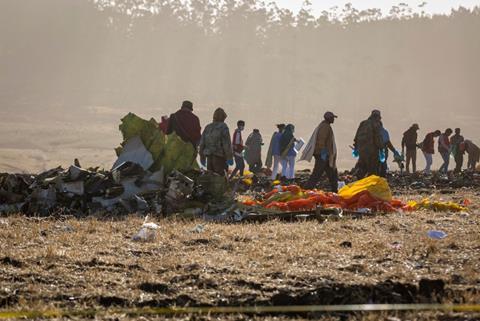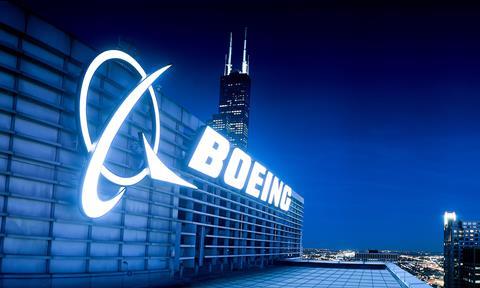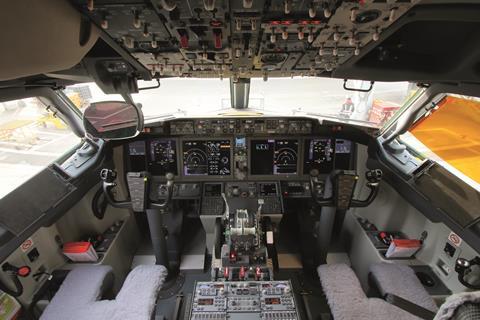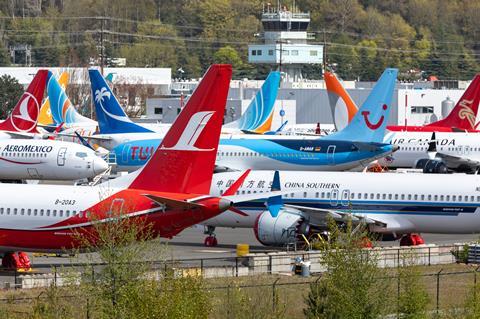A “culture of concealment” by Boeing and erroneous technical assumptions, combined with insufficient oversight by the Federal Aviation Administration, contributed to the deadly crashes of two Boeing 737 Max.
That conclusion was reached by a broad US congressional investigation into the causes of the 29 October 2018 crash of Lion Air flight 610 and the 10 March 2019 crash of Ethiopian Airlines flight 302, which killed a combined 346 people.

”The Max crashes were not the result of a singular failure, technical mistake or mismanaged event,” the report, released on 16 September, concludes. “They were the horrific culmination of a series of faulty technical assumptions by Boeing’s engineers, a lack of transparency on the part of Boeing’s management, and grossly insufficient oversight by the FAA — the pernicious result of regulatory capture on the part of the FAA with respect to its responsibilities to perform robust oversight of Boeing and to ensure the safety of the flying public.”
The 239-page report, released by the US House of Representatives’ Committee on Transportation and Infrastructure, details findings of an 18-month investigation that included several congressional hearings and reviews of Boeing and FAA internal documents.
House Transportation Committee chair Peter DeFazio and aviation subcommittee chair Rick Larsen led the investigation.
“Our report lays out disturbing revelations about how Boeing — under pressure to compete with Airbus and deliver profits for Wall Street — escaped scrutiny from the FAA, withheld critical information from pilots and ultimately put planes into service that killed 346 innocent people,” says DeFazio. “What’s particularly infuriating is how Boeing and [the] FAA both gambled with public safety in the critical time period between the two crashes.”
Responding to the report, Boeing says it “cooperated fully and extensively with the committee’s inquiry”.
“We have learned many hard lessons as a company from the accidents of Lion Air flight 610 and Ethiopian Airlines flight 302, and from the mistakes we have made,” Boeing says. “As this report recognises, we have made fundamental changes to our company as a result, and continue to look for ways to improve.”

In response, the FAA says it is “committed to continually advancing aviation safety and looks forward to working with the committee to implement improvements identified in its report”.
“We are already undertaking important initiatives based on what we have learned from our own internal reviews as well as independent reviews of the Lion Air and Ethiopian Airlines accidents,” adds the FAA. “These initiatives are focused on advancing overall aviation safety by improving our organisation, processes and culture.”
Citing a “culture of concealment”, the report says “Boeing withheld crucial information from the FAA, its customers and 737 Max pilots, including internal test data that revealed it took a Boeing test pilot more than 10sec to diagnose and respond to uncommanded MCAS activation in a flight simulator, a condition the pilot described as ‘catastrophic’”, says the committee.
Federal guidelines “assume pilots will respond to this condition within 4sec”, says the committee.
Boeing equipped the 737 Max with the maneuvering characteristics augmentation system (MCAS), which trims the Max’s nose down to make the jet feel to pilots like previous 737 models. By controlling the horizontal stabiliser, MCAS counters the Max’s tendency to pitch nose-up in some circumstances, which results from new CFM International Leap-1B engines, which are heavier than turbofans on previous 737s.
MCAS activates based on readings from a single angle-of-attack indicator – an instrument that failed on the two crashed jets. The pilots of those jets were unable to address repeated MCAS activation, which sent the two Max into nose dives.

Boeing’s hazard assessment, used in developing the Max, classified the potential impact of unintended MCAS-induced stabiliser movement as a “major” failure, not “hazardous” or “catastrophic”, allowing the company to avoid analysing the scenario more closely, according to a previously-released report by Indonesia’s investigation authority.
Independent safety experts have also cited pilot errors, pilot training shortcomings and poor maintenance practices as substantial factors contributing to the crashes.
The US House report faults Boeing for making “fundamentally faulty assumptions” about MCAS. It “expected that pilots, who were largely unaware that MCAS existed, would be able to mitigate any potential malfunction”.
The Max’s issues also reflect the “tremendous financial pressure on Boeing and the 737 Max programme to compete with Airbus’s new A320neo”, which created pressure to cut costs, maintain schedules and avoid slowing Max production despite the jet’s issues, the report says.
Additionally, it notes that “multiple career FAA officials” reported examples of FAA managers overruling the agency’s own technical experts “at the behest of Boeing”.
Those examples align with a recent FAA employee survey finding that many staff believe “senior leaders are more concerned with helping industry achieve its goals and are not held accountable for safety-related decisions”, says the Transportation Committee.
The report also cites “conflicted representation” – a factor related to the FAA’s oversight structure, which relies heavily on “Organization Designation Authorization”. Under that programme, aspects of which are common to other countries’ certification processes, the FAA delegates large portions of aircraft certification work to manufacturers.
The “oversight structure creates inherent conflicts of interest that have jeopardised the safety of the flying public”, says the Transportation Committee.

The report cites “multiple instances in which Boeing employees who have been authorised to perform work on behalf of the FAA failed to alert the FAA to potential safety and/or certification issues”.
Boeing notes that since the crashes it has incorporated into the Max, and into its broader aircraft design process, “many” recommendations made by various investigative reports and by Boeing’s internal reviews.
Boeing has since detailed technical changes made to the Max that the company and outside experts say makes the aircraft safe. The changes are intended to prevent MCAS from firing repeatedly and to ensure pilots can override the system.
“The revised design of the Max has received intensive internal and regulatory review, including more than 375,000 engineering and test hours and 1,300 test flights,” Boeing says. Once certificated, the Max will be “one of the most-thoroughly scrutinised aircraft in history, and we have full confidence in its safety”, Boeing adds.
Boeing has also established a new internal safety organisation and restructured its engineering department.
The company has said it expects regulators will certificate the Max in the fourth quarter following a grounding that took effect in March 2019.
The FAA notes that in August it issued a proposed airworthiness directive “that will mandate a number of design changes to the Boeing 737 Max before it returns to passenger service”.
“The FAA continues to follow a thorough process, not a prescribed timeline, for returning the aircraft to service,” the agency says
Story updated on 16 September to include comments from the FAA.



























